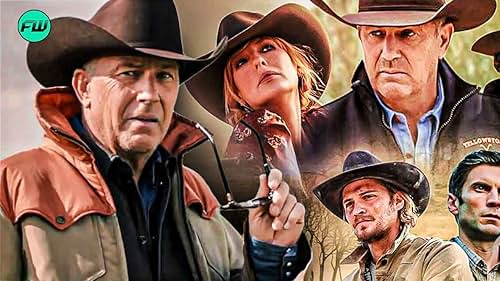
The wind, a timeless sculptor of the American West, whispers through the sagebrush, carrying the dust of centuries and the echoes of fierce independence. It’s the same wind that rustles the banners of the Dutton Ranch, the fictional epicenter of a saga that has captivated millions. For years, Yellowstone has been more than a television show; it’s a modern epic, a visceral meditation on land, legacy, and the unyielding will to protect both. Now, as the horizon of 2026 looms, that universe, vast as Montana itself, is set to expand, unfurling two major spin-offs that promise to deepen the mythos and broaden the narrative tapestry of the new American frontier.
The allure of Yellowstone lies in its potent cocktail of high-stakes drama, breathtaking scenery, and a raw, almost elemental struggle for survival against the tides of modernity. John Dutton and his progeny are not just ranchers; they are living testaments to a fading way of life, their hands perpetually stained with the earth and the blood of their battles. This visceral connection to the land, coupled with the intricate, often brutal, dynamics of family, power, and loyalty, has created fertile ground for storytelling. It’s a universe where the past is always present, where ancestral ghosts walk alongside diesel trucks, and where the moral compass is as rugged and unforgiving as the landscape.
The genius of Taylor Sheridan’s vision has already been proven with the success of 1883 and 1923. These prequels weren’t mere footnotes; they were essential pillars, tracing the arduous, often tragic, journey of the Dutton ancestors who carved out their empire with grit, gunpowder, and an unshakeable belief in the promise of the West. They painted a vivid picture of hardship and resilience, enriching the contemporary narrative by illustrating the monumental cost of the land the modern Duttons so fiercely defend. These expansions weren’t just about adding more episodes; they were about adding more history, more soul to an already profound story.
Looking to 2026 and beyond, the announcement of two major spin-offs signals a strategic deepening, rather than just a widening, of this narrative well. Imagine, for a moment, the first of these new ventures, perhaps titled “The Bitterroot Legacy.” This series might shift its focus geographically, perhaps to the rugged, less-explored reaches of Idaho or Wyoming, introducing a new powerful ranching family, not necessarily blood-related to the Duttons, but bound by the same code of the land. Their struggles might reflect different facets of the modern West: the encroachment of tech billionaires and luxury resorts, the escalating battles over dwindling water rights, or the clash between traditional ranching and burgeoning environmental movements. It would illustrate that the Duttons’ fight isn’t an isolated anomaly, but a universal struggle echoed across the vast, untamed corners of the West. Picture dust-choked valleys where ancient rivalries simmer, not just over fences, but over the very future of the land, driven by characters as flawed and fascinating as Beth and Rip, but forged in a different crucible.
The second spin-off, perhaps reaching even further afield thematically, could explore the undercurrents that feed the Yellowstone universe from a different perspective. Consider “The High Plains,” a series set in a major Western city like Denver or Salt Lake City, but intrinsically linked to the rural conflicts. This show might delve into the political machinations, the corporate greed, or the bureaucratic red tape that directly impacts the ranching families. It could follow ambitious lawyers, ruthless land developers, or even federal agents whose decisions in gleaming skyscrapers send ripples through the ranches and reservations. This would illustrate the reach of the Yellowstone universe beyond the immediate pastures, showing how the fate of a vast cattle empire is often decided not by a gunfight, but by a signature on a document, or a vote in a state legislature. It would be a stark contrast—the sleek lines of modern architecture against the sweeping natural landscapes—yet bound by the same relentless pursuit of power and control over resources.
These expansions are more than mere brand extensions; they are testaments to the enduring power of myth-making in a modern age. They allow for a panoramic view of the American West, not as a static painting, but as a dynamic, living entity—a land of breathtaking beauty and brutal challenges, where history is not just remembered but relived. As the Yellowstone universe pushes into 2026 and beyond, it continues to prove that some stories are too big, too complex, and too deeply rooted in the American psyche to be confined to a single ranch. They are stories as vast and as wild as the sky above Montana, forever expanding, forever illustrating the visceral truth of land, legacy, and the relentless human spirit that clings to both. The wind whispers, and the saga continues.
